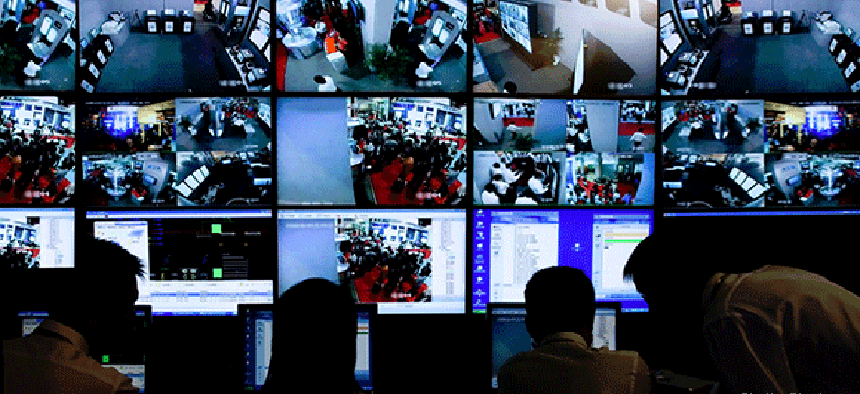4 tips for better tactical video surveillance

The U.S. Park Police learned some valuable video surveillance lessons during this year's presidential inauguration.
Arranging security for a presidential inauguration is a complex job involving cooperation between multiple law enforcement agencies and the private sector.
“The process involves partnerships on many fronts,” said Dave Mulholland, commander of technology services for the U.S. Park Police. His department worked with other local and federal law enforcement agencies, as well as the Secret Service, during this year’s presidential inauguration. Setting up a tactical IP video surveillance system also required access to private property, with all of the legal and technical complications that entails.
“Plans change at the last minute,” Mulholland said. “We had to scramble to figure out alternate plans.” In such an undertaking, “you need to expect there will be issues, even under the best of circumstances.”
Mulholland offered several lessons from this year’s inauguration for coping with issues when deploying video surveillance for a high-security environment.
1. Keep the command simple.
Maintain a single, centralized point of control for all cameras. Otherwise, you might find yourself fighting to get the video images you need.
The Park Police put controls for its cameras at the 2013 inauguration in the three Multi-agency Control Centers. “With only three people, how challenging could it be?” Mulholland said. “We learned. We got into control wars,” with different people calling for different views of events from the cameras.
When one team is trying to focus on a specific problem, precious time can be lost if someone in a different location points the camera somewhere else. All commands need to go through a single clearinghouse.
2. Network cameras are no good without bandwidth.
“The camera is only as good as the images you get back,” Mulholland said. Modern cameras can provide high-definition images at relatively low bit rates, but they still need reliable network connections.
Tactical cameras set up temporarily often do not have a fixed infrastructure available for backhaul. During the inauguration, all of the Park Police cameras relied on cellular connections. This can be adequate when it is available, but during an event at which hundreds of thousands of people in a small area are calling, tweeting, texting and Facebooking at the same time, cellular systems are quickly overloaded.
The Park Police used directional antennas with its Axis Communications cameras, pointing to cell towers outside the event zone, some as far as two-and-a-half miles away. An omnidirectional antenna will simply lock onto the nearest cell, which is likely to be overwhelmed when it is needed most.
3. Get help.
Find a vendor that will work with you when deploying a video system, at least until you are familiar with the equipment.
“We are a homegrown shop,” Mulholland said of Park Police technology services. “We are self-taught.” But as video equipment becomes better and more sophisticated, it becomes more complex. “The days of take it out of the box, read the handbook and hope for the best are over.”
When the Park Police bought five new cameras from Axis, the company sent out a team of engineers who helped get them set up and in place. The cameras themselves were not necessarily complex to set up and operate, but much of the work had to be done at the last minute with constantly changing plans and there was little time to get up to speed with new equipment.
“Our folks walked away much more capable,” Mulholland said. “I would make this one of the criteria in deciding what to purchase.”
4. Share the learning experience.
Axis engineers provided a wealth of information about the high-end cameras being deployed, from which the U.S. Park Police benefited, Mulholland said. “If I were to do it again, I would include other area law enforcement partners” in the experience.
Vendors probably will not be able to field engineering teams for every deployment by every customer, so let as many interested parties as possible take advantage of them when they are available. One of the reasons companies are willing to send their technical people into the field is because the company also can learn from the real-world experience of its customers. Leveraging those opportunities can be a win for both parties.





